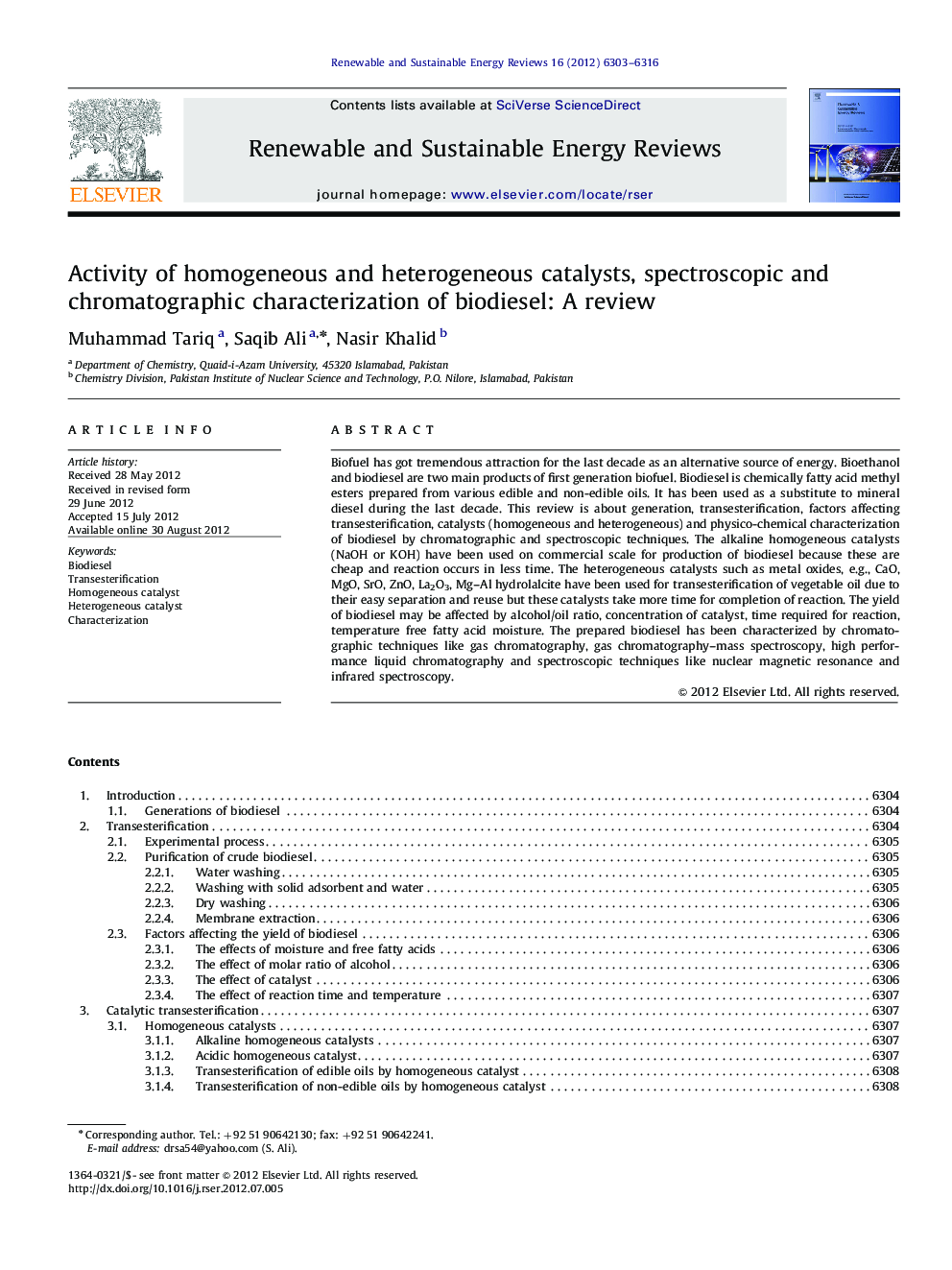| Article ID | Journal | Published Year | Pages | File Type |
|---|---|---|---|---|
| 1750667 | Renewable and Sustainable Energy Reviews | 2012 | 14 Pages |
Biofuel has got tremendous attraction for the last decade as an alternative source of energy. Bioethanol and biodiesel are two main products of first generation biofuel. Biodiesel is chemically fatty acid methyl esters prepared from various edible and non-edible oils. It has been used as a substitute to mineral diesel during the last decade. This review is about generation, transesterification, factors affecting transesterification, catalysts (homogeneous and heterogeneous) and physico-chemical characterization of biodiesel by chromatographic and spectroscopic techniques. The alkaline homogeneous catalysts (NaOH or KOH) have been used on commercial scale for production of biodiesel because these are cheap and reaction occurs in less time. The heterogeneous catalysts such as metal oxides, e.g., CaO, MgO, SrO, ZnO, La2O3, Mg–Al hydrolalcite have been used for transesterification of vegetable oil due to their easy separation and reuse but these catalysts take more time for completion of reaction. The yield of biodiesel may be affected by alcohol/oil ratio, concentration of catalyst, time required for reaction, temperature free fatty acid moisture. The prepared biodiesel has been characterized by chromatographic techniques like gas chromatography, gas chromatography–mass spectroscopy, high performance liquid chromatography and spectroscopic techniques like nuclear magnetic resonance and infrared spectroscopy.
